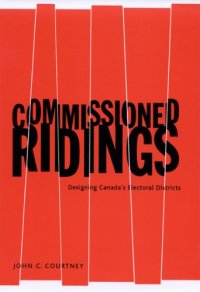
Ebook: Commissioned Ridings: Designing Canada’s Electoral Districts
Author: John C. Courtney
- Tags: Canadian, International & World Politics, Politics & Government, Politics & Social Sciences, Political Science, Comparative Politics, Constitutions, History & Theory, Reference, Politics & Government, Politics & Social Sciences, Legislative Branch, United States, Politics & Government, Politics & Social Sciences, General, Elections & Political Process, Politics & Government, Politics & Social Sciences, Elections, Elections & Political Process, Politics & Government, Politics & Social Sciences
- Year: 2002
- Publisher: McGill-Queen’s University Press
- Language: English
- pdf
Where did the idea for nonpartisan constituency redistributions come from? What were the principal reasons that Canada turned to arm's-length commissions to design its electoral districts? In "Commissioned Ridings", John Courtney addresses these questions by examining and assessing the readjustment process in Canada's electoral boundaries. Defining electoral districts as representational building blocks, Courtney compares federal and provincial electoral readjustments in the last half of the twentieth century, showing how parliamentarians and legislators, boundary commissions, courts, and interested members of the general public debated representational principles to define the purposes of electoral redistricting in an increasingly urban, ethnically mixed federal state such as Canada. Courtney analyses boundary commissions - their membership, degree of independence, and powers. He explores the participation of the public and politicians in the deliberation of the commissions, as well as the extent to which Canada's ridings have moved gradually toward greater population equality and the prospects for further changes in the way electoral districts are designed. Noting that Canada's electoral boundary readjustments are based on principles markedly different from those in the United States, Courtney examines the impact of various Canadian court decisions based on the right to vote, protection of the Charter, as well as new concepts such as community of interest, minority representation, and effective representation. Courtney concludes with an examination of the conditions that must be met before changes to other representational building blocks, such as the electoral system, can be made.
Download the book Commissioned Ridings: Designing Canada’s Electoral Districts for free or read online
Continue reading on any device:

Last viewed books
Related books
{related-news}
Comments (0)